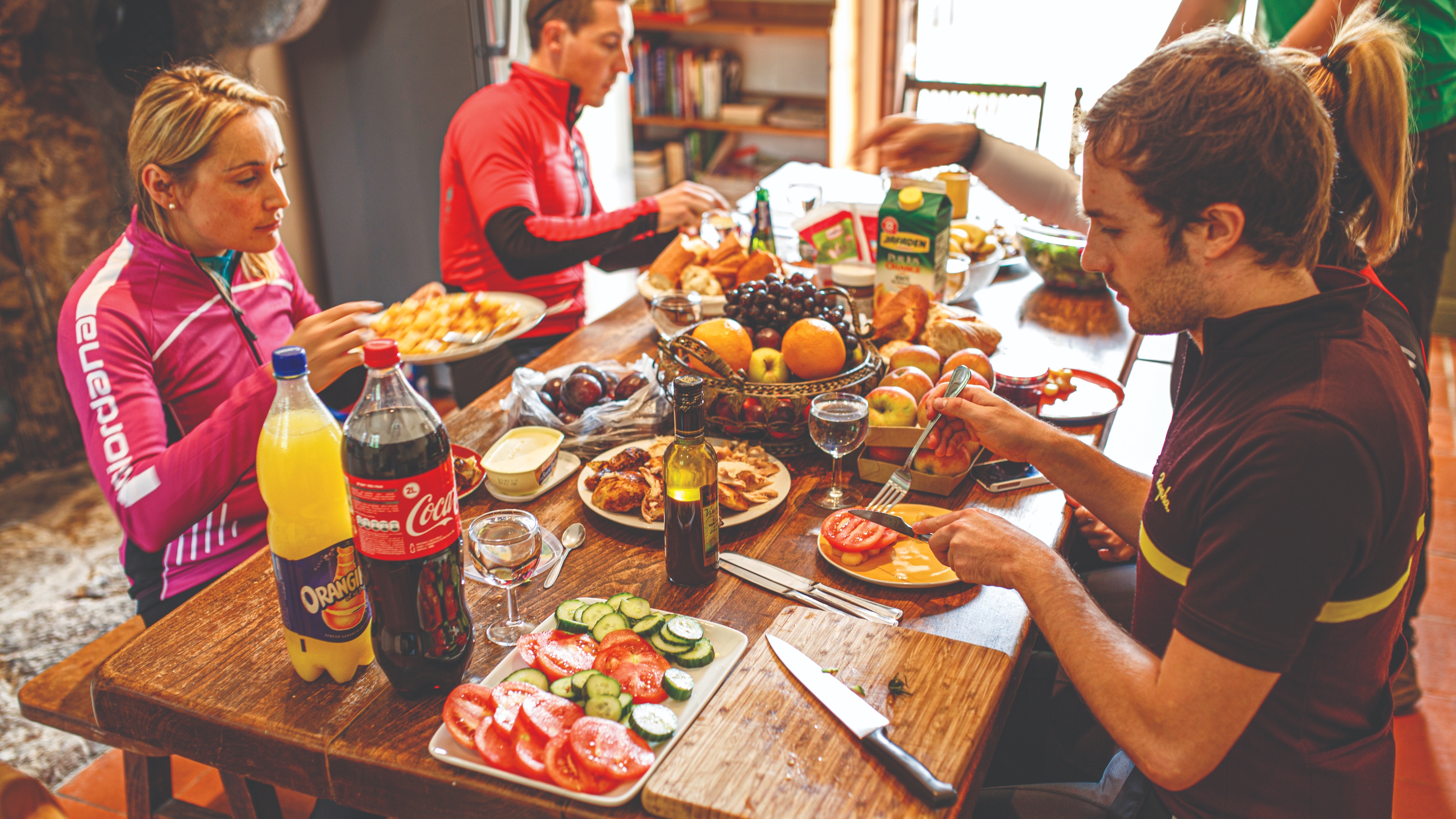
We've all seen or heard of pasta parties preceding major endurance events, and the concept of filling up before a big ride is rarely lost on cyclists.
But, what kind of ride actually requires a dedicated carb loading approach? And, how do you ensure that you're getting the right volume of energy food in?
We sat down with expert, Dr Sam Impey, to get the lowdown.
CW: In layman’s terms, what is carb-loading?
Sam: Carb loading is essentially filling up as much as you can with carbohydrate. Our muscles and liver store carbohydrate as a substance called glycogen, our primary fuel source.
What are the benefits of doing this?
When we run out of ‘juice’ or ‘hit the wall’ in cycling, the cause is quite often that we’ve run low on glycogen. If you want to maintain a high output, you need as much glycogen as possible. Think of the muscle as a sponge, with carb-loading helping it to soak up as much glycogen as possible. The benefit is that you’re able to ride for longer at higher intensities, producing your best possible performance.

Breakfast: Large bowl of porridge (two cups) liberally topped with blueberries, strawberries and banana – approx 120g carbs.
Morning snack: 300ml fruit smoothie and a flapjack – approx 100g carbs.
Lunch: Cheese and ham or peanut butter and jam sandwich with a side order of sweet potato fries (100g) and two bananas – approx 130g carbs.
Afternoon snack: Greek yoghurt (200g) with tablespoon maple syrup and flapjack – approx 90g carbs.
Dinner: Large serving (three cups, 990g) of spaghetti bolognese with small side salad, followed by large helping of rice pudding (1.5 cups, 275g) with jam – approx 190g carbs.
Evening snack: Two slices of toast with jam – approx 40g carbs.
Total carbs: 670g (10g per kilo for 67kg athlete)
Should I carb-load before every ride?
No. For shorter rides of up to 90 minutes, you’re OK with a balanced diet. Simply have your usual breakfast and lunch, and then a higher-carbohydrate dinner the evening before.
What about for long rides of two to five hours?
Carb-loading the day before your longest ride of the week can help make it a much more enjoyable experience and allow you to get more out of it. Eat a carbohydrate rich breakfast, high-carb snacks throughout the day, a good portion of carbs at lunch, and the same at dinner.
And what about if you’re going really long – should carb-loading start days in advance?
There’s plenty of evidence to suggest that 24 hours of very high-carbohydrate intake is enough to maximise your glycogen stores. If you were doing an ultra-distance event, for example a 12-hour race, carb-loading for 36 to 48 hours, to be on the safe side, would be a reasonable plan.
How much carbohydrate is required?
Eight to 10 grams of carbohydrate for every kilogramme of body mass per day, i.e. the day before the event. If you’re a 75kg athlete, you’re looking to consume around 750 grams of carbohydrates the day before your event (see box). Bear in mind, that’s carb weight, not food weight – it’s quite a lot. If you wanted to space that out over two days for easier digestion, that would be OK.
Is there any risk to health from all those carbs?
If you are exercising regularly and are training for an event, a 24-hour carb load is not detrimental to your health. It tops up the muscle and liver stores of glycogen, that’s all. If you are not racing or doing long, hard training rides, you do not need to carb-load. At all other times, eat a balanced diet containing protein, vegetables, fruit, healthy fats and carbohydrates to keep you healthy.
I’ve got a 90-minute race on Saturday. What’s on the menu on Friday evening?
A really good one is white pasta alongside something like Bolognese with Quorn or turkey mince, which are both low in saturated fat. Equally, white rice is also a very good option. The only thing to consider is that pasta absorbs three times its own weight in water, whereas it’s five times for rice. This means that 200 grams of cooked pasta contains a lot more carbohydrate than the same weight of cooked rice, so remember to make allowances for that.
Why white rice and white pasta rather than brown?
Just because brown rice and brown pasta are higher in fibre – potentially leading to GI distress – and lower in carbohydrate per unit volume. Find out which carb sources work best for you. Beans and chickpeas, for example, contain more protein and fibre, and less carbohydrate, but some people prefer them.
Looking for more? Check out this in-depth feature on carb loading and the mistakes to avoid.







